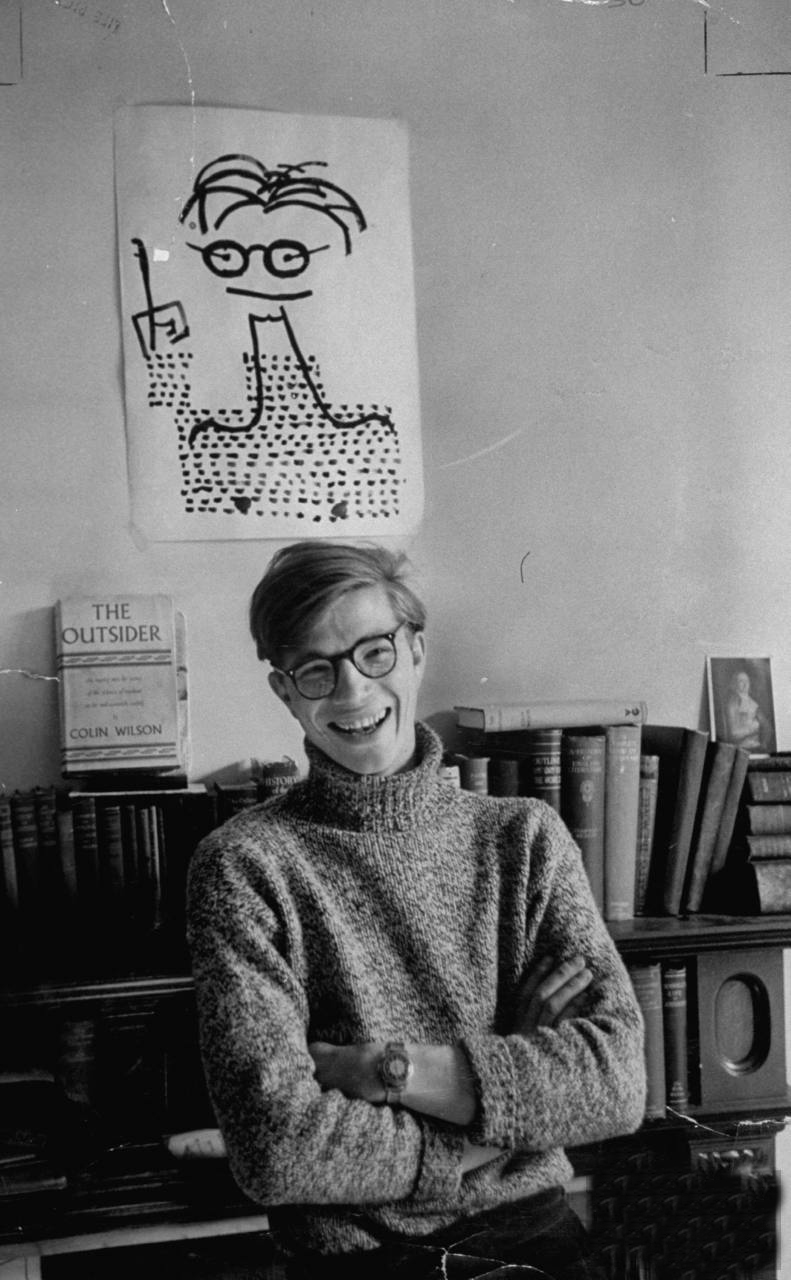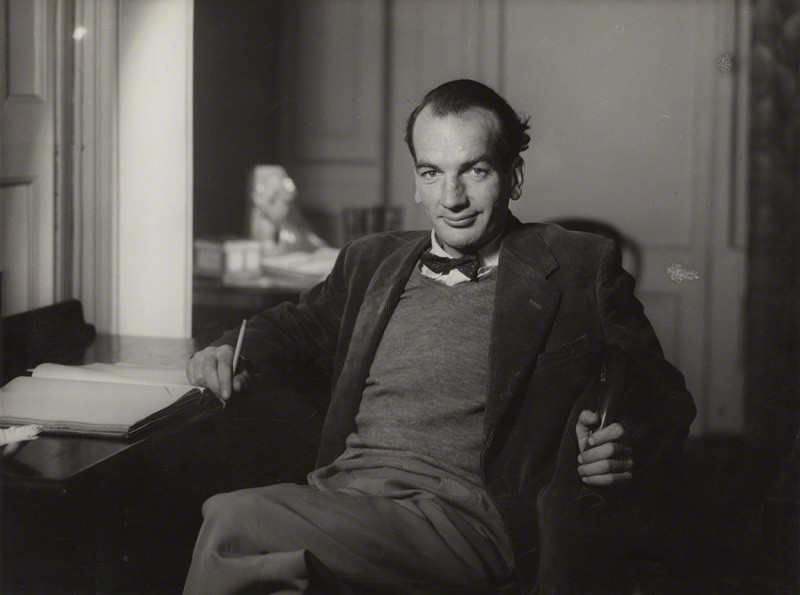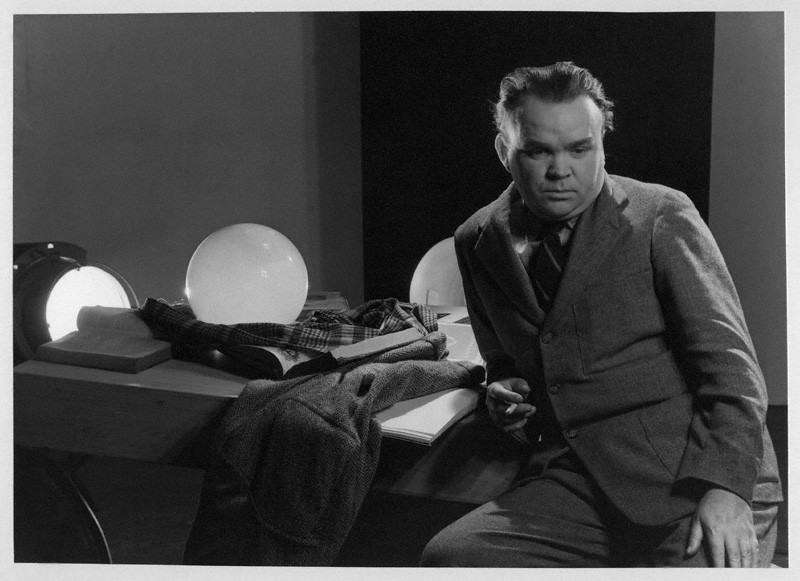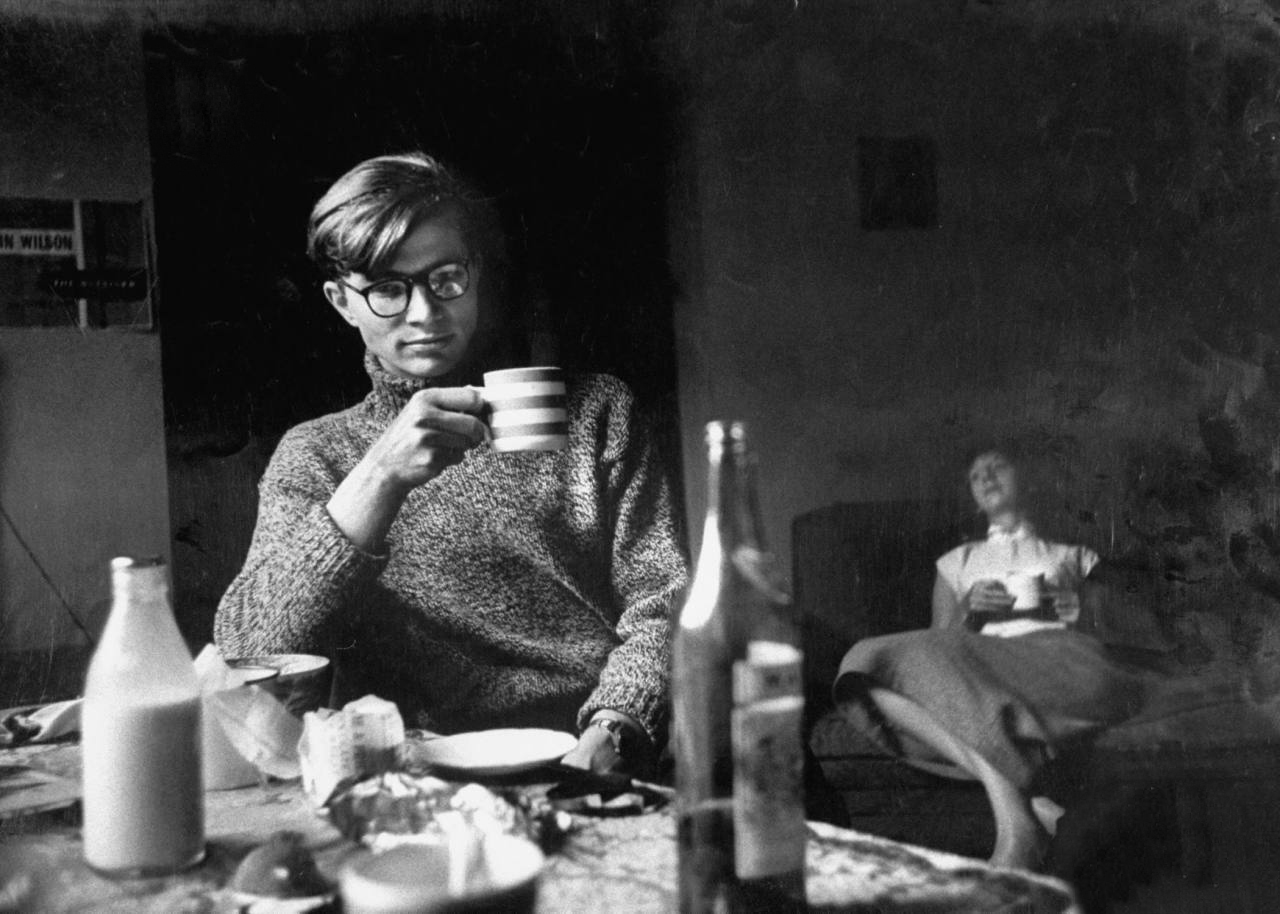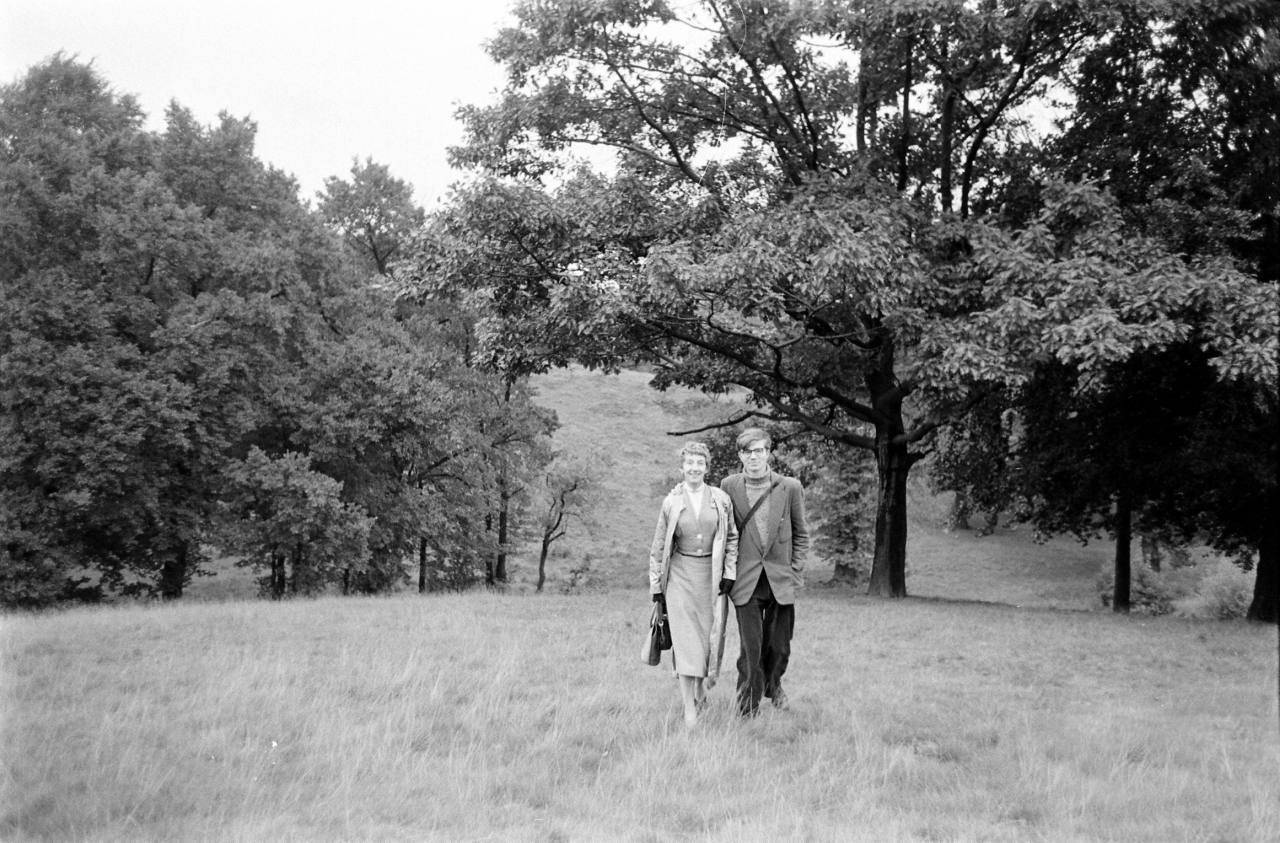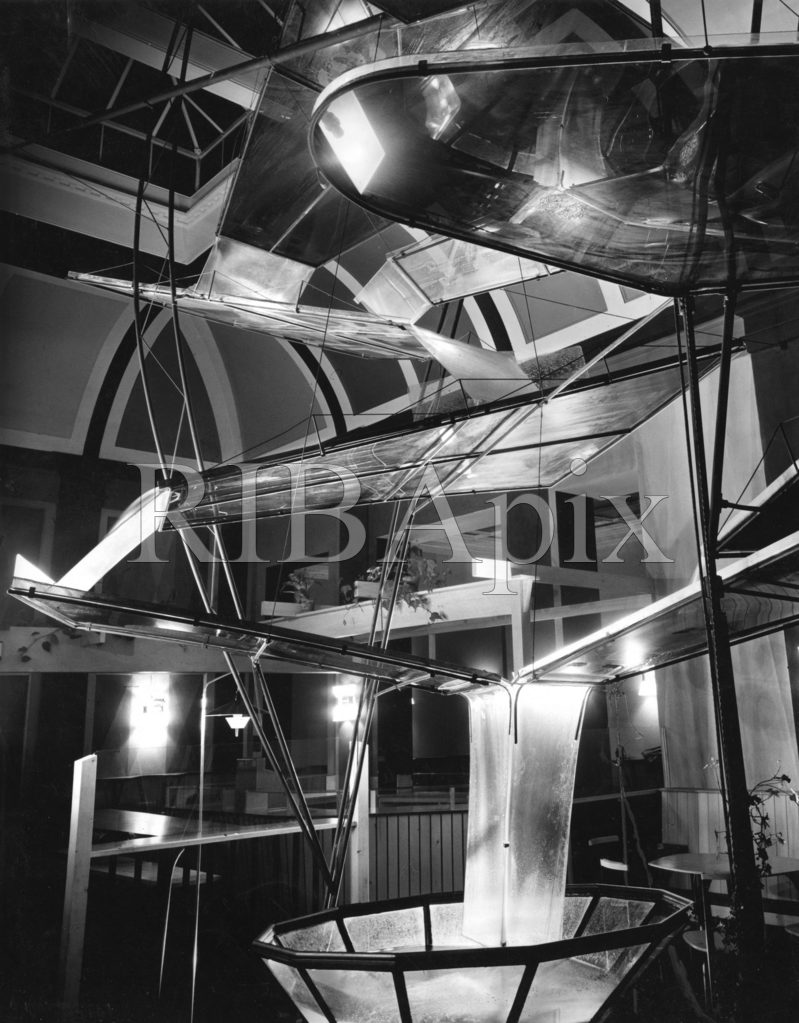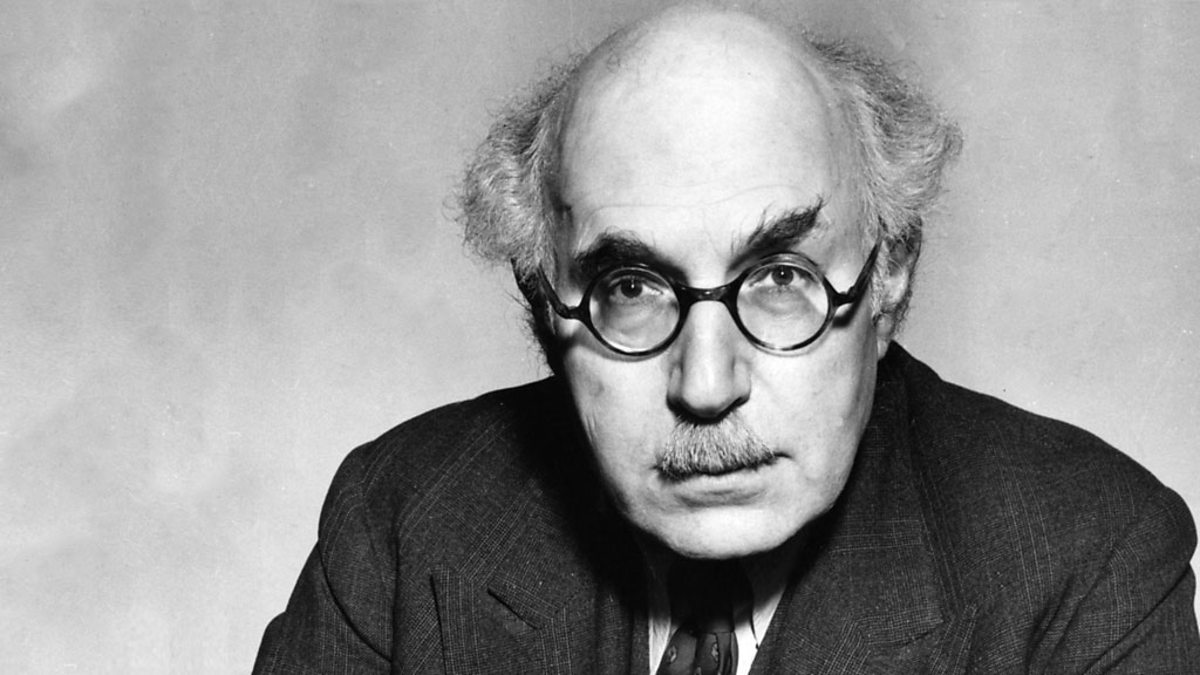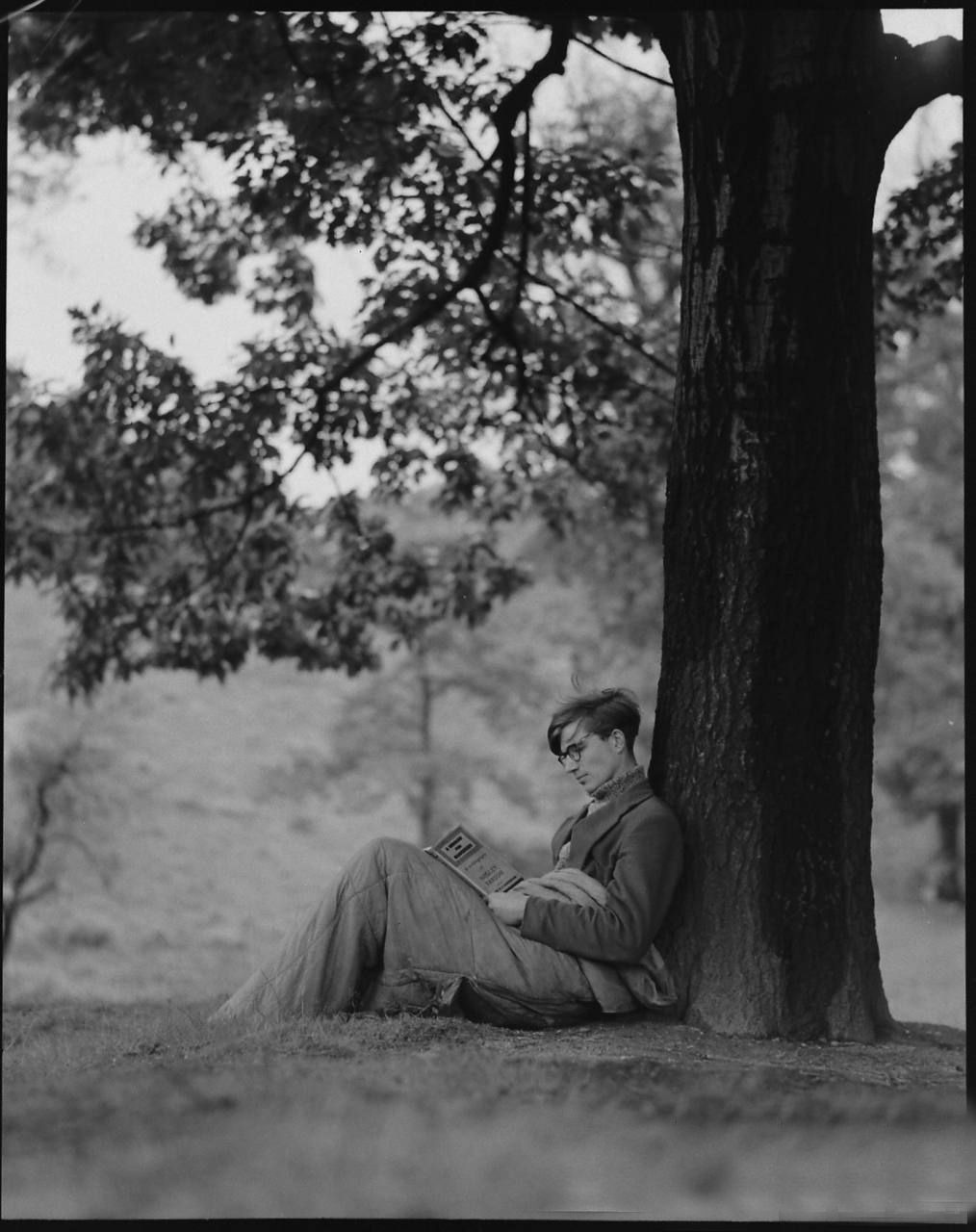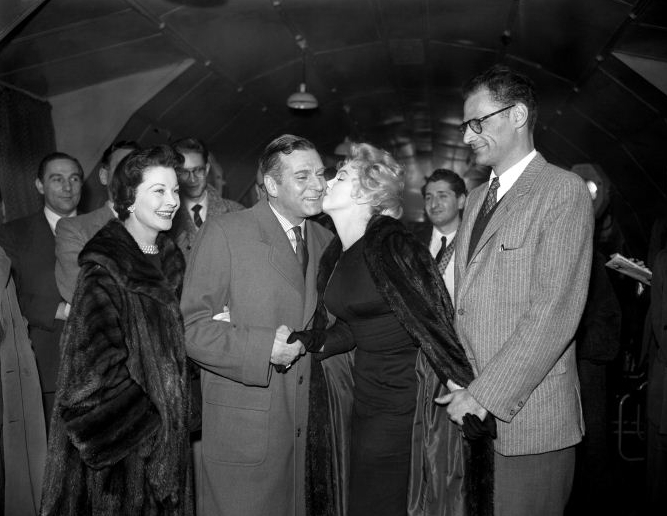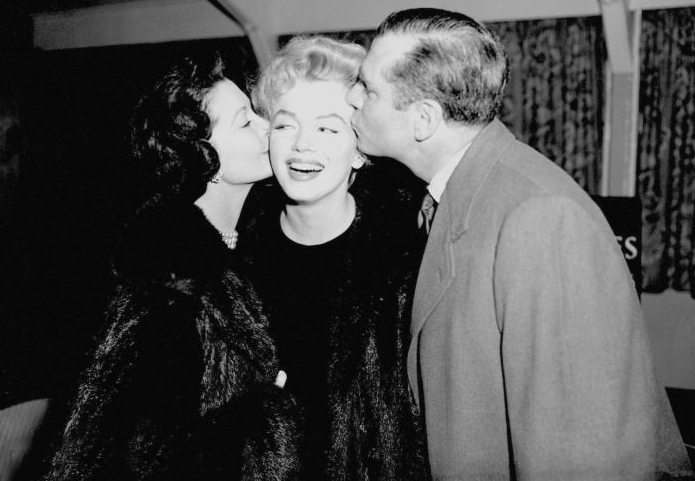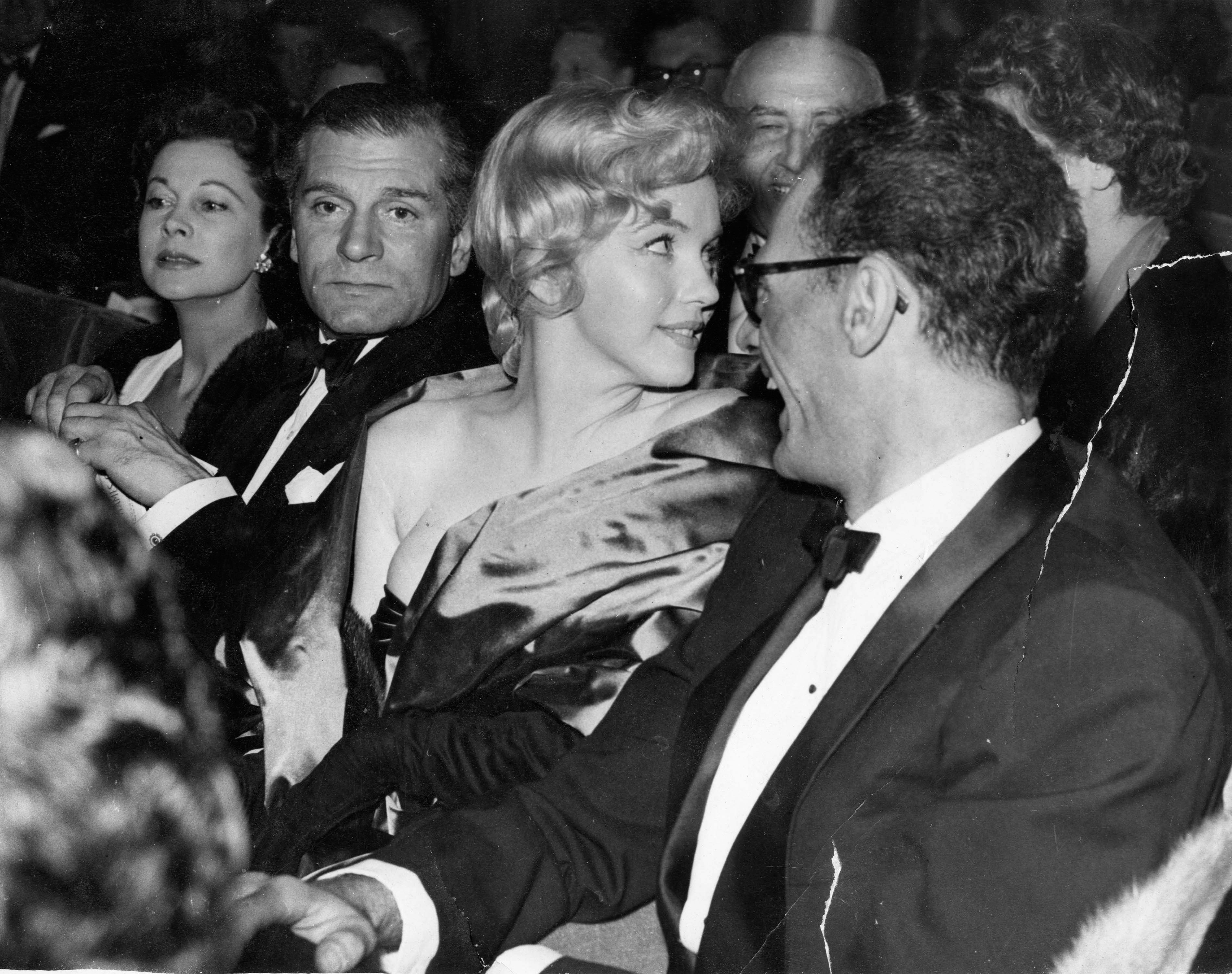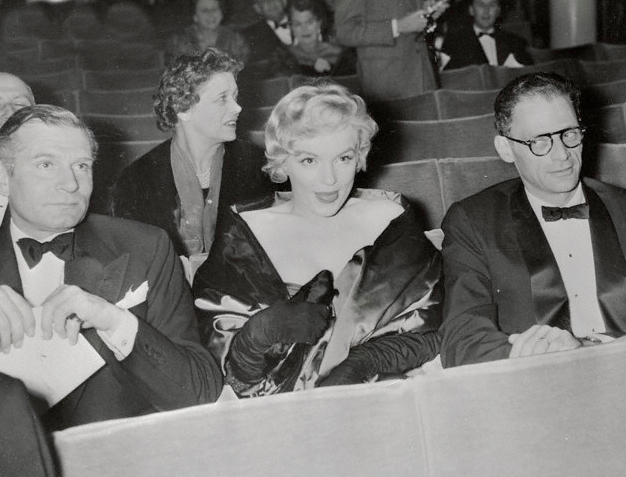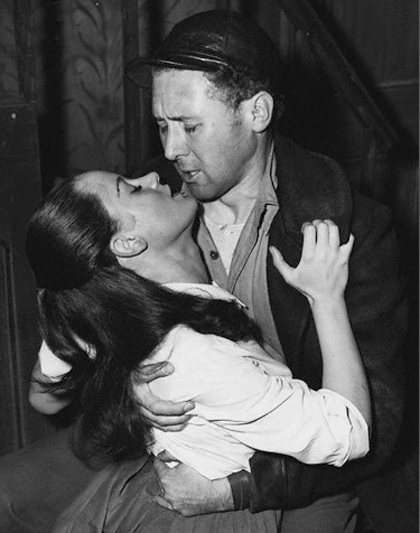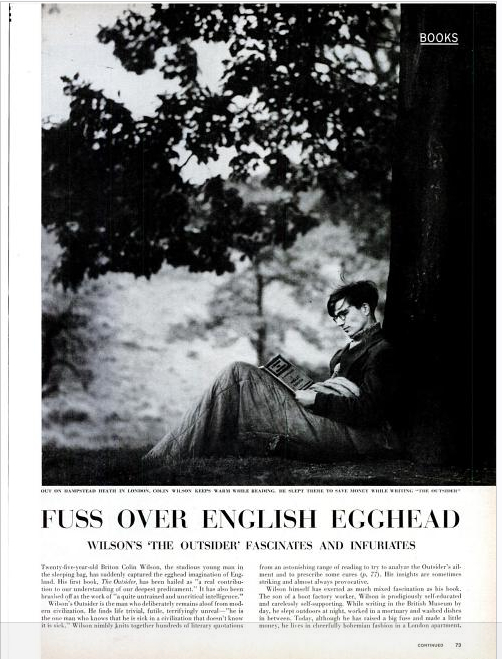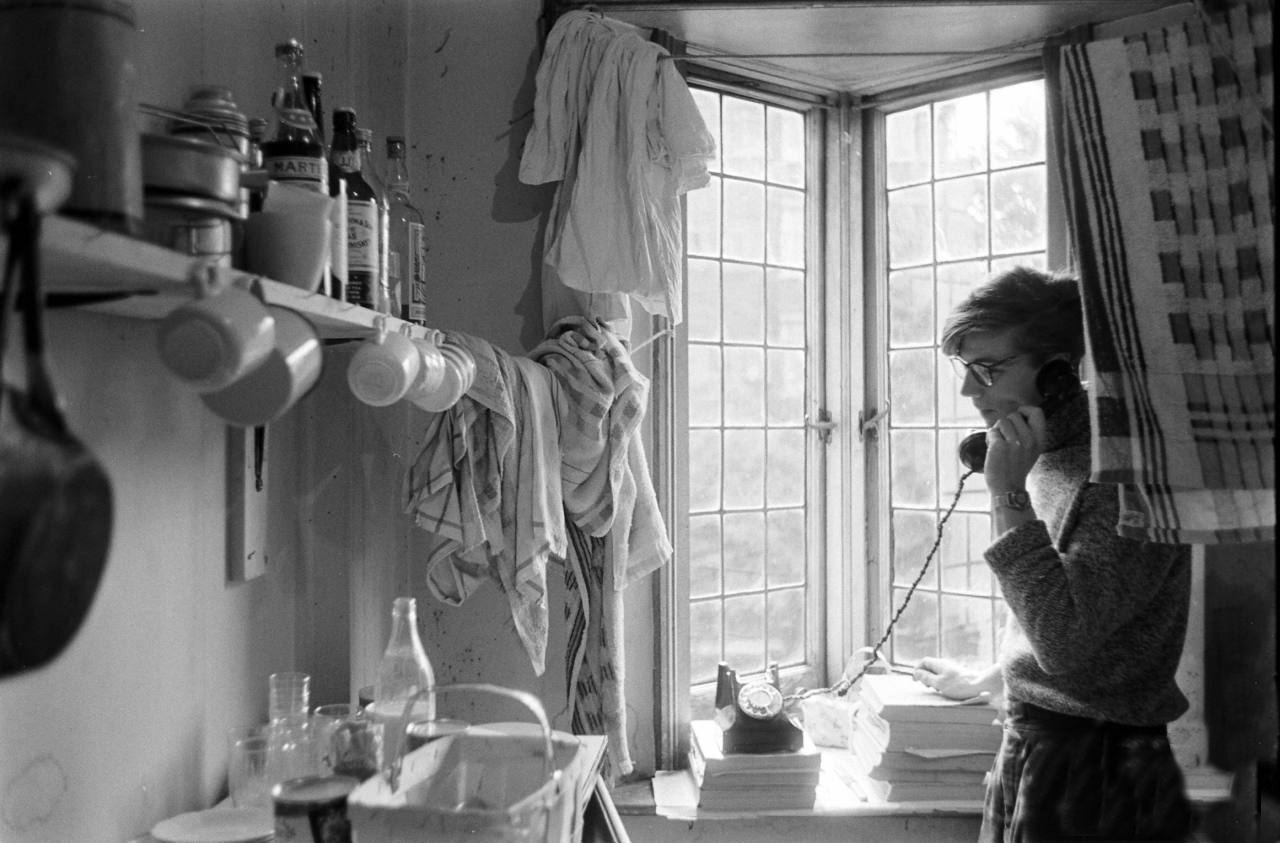The writer Colin Wilson once said: “I had taken it for granted that I was a man of genius since I was about thirteen.” For a short few months after the publication of his first book called The Outsider in 1956, it seemed that the rest of the world thought so too. The Outsider was a collection of essays that explored the philosophical idea of ‘the outsider’ in literature including that of Kafka, Camus, Hesse, Sartre and Nietzsche. It was an impressive collection of modern writers but it seems almost extraordinary today that within a few days of publication, the 24 year old Wilson was rocketed into celebrity orbit for what was essentially a book of existential literary criticism. It was a good way, for many of the tens of thousands who bought the The Outsider, of making an acquaintance with intellectual foreign authors without the laborious obligation of actually having to read any of their books. Gollancz, the publishers, sold out their initial print run of 5000 copies on the very first day of publication.
Britain’s two main literary critics were both effusive in their reviews of the book. Philip Toynbee described the book as “an exhaustive and luminously intelligent study of a representative theme of our time” and a “real contribution to our understanding of our deepest predicament.” An equally ebullient Cyril Connolly in the Sunday Times pronounced it as “extraordinary” and “a young man of twenty-four has produced one of the most remarkable first books I have read for a long time”. Extravagant praise from a man who would later admit that he hadn’t actually read the book. One cautionary note came from Kingsley Amis who wrote in the Spectator “One of the prime indications of the sickness of mankind in the mid-twentieth century is that so much excited attention is paid to books about the sickness of mankind in the mid-twentieth century.”
After the celebratory reviews in the Sunday Times and the Observer, the less high-brow newspapers were now following the Colin Wilson story. Dan Farson, one of Britain’s first television stars, but then writing for the Daily Mail, wrote: “I have just met my first genius. His name is Colin Wilson.” At this stage no one seemed to notice that Wilson was agreeing, slightly too readily, with the ‘genius’ part of his description. In his journal Wilson wrote: “This book will be the Waste Land of the fifties, and should be the most important book of its generation.”
The literary world were shocked that The Outsider had been written by a man who seemed to have come from nowhere – he hadn’t even been to university, red brick or otherwise. Wilson was a working class lad from Leicester and had left school a few weeks before he was sixteen. After reading Sir James Jeans’ The Mysterious Universe at the age of twelve, he initially decided, not without confidence, to become a scientist – “my daydream had been to become Einstein’s successor”. Two years later he had precociously put together a work of essays covering all aspects of science called A Manual of General Science. A developing interest in literature and poetry made him change his mind about scientific study and after two unfulfilling jobs – one of which was a laboratory assistant at his old school – he drifted into the Civil Service. He quickly became bored and in the Autumn of 1949, as part of his National Service he joined the Royal Air Force. After just six months and numerous clashes with authority, Wilson attempted to feign homosexuality in order to be dismissed. An RAF medical board, assuming that Wilson was only pretending and certainly not inexperienced with this ruse, was particularly tough with its questioning. The young writer-to-be, however, managed to get the better of them with his acting: “I put on a show of mild hysterics, and accused them of treating homosexuals like criminals, and they had no alternative but to discharge me. A succession of menial jobs followed before he decided to travel around Europe. He returned to Leicester in 1951 where he married his first wife, Betty Troop, and they both moved to London, where their son was born. The marriage soon disintegrated and again he drifted in and out of many unrewarding jobs. During this traumatic period, Wilson was continually working and reworking the novel that was eventually published as Ritual in the Dark in 1960.
He met his girlfriend Joy on one of his numerous short-term jobs – he was a Christmas shop assistant at Peter Robinson on Oxford Circus and she was in charge of the cash registers. He fell for her immediately, partly because he was impressed with her middle-class background, ‘When I heard Joy, I thought “Oh marvellous, that’s what I want.” And when I asked her, “What books have you got on your shelf?” she said she’d got Yeats and Ulysses, and Proust in French, I thought, “My God, that’s the girl I really want!” Betty didn’t read at all.
While Wilson was working as a labourer in a plastics factory at Whetstone he got into an argument with a foreman about his time-keeping for which he got the sack. During the same week his landlady gave him notice on his flat. With next to no money Wilson realised that if he bought a tent and a sleeping bag he could avoid paying any rent and started sleeping on a golf course on the outskirts of London. It wasn’t long before he realised that putting a tent up and down was not only time consuming but attracted unwanted attention. He started sleeping rough with only his waterproof sleeping bag for protection. After about a month he started to spend the night more centrally on Hampstead Heath. This was conveniently close to his girlfriend’s lodgings and also the British Museum where he had now started writing. His day would start with breakfast at a cafe near Chalk Farm station where he could get a cup of tea and two thick slices of bread with dripping for 7d (approximately 3p). He would then cycle to the British museum where every day, despite the attendant threatening to complain about him, he would leave his rucksack with his sleeping bag at the cloakroom.
By the end of 1954 Wilson was writing at the museum during the day and working in the evening at a large café on Haymarket. It was brand new with an interior designed by Antoine Acket and was part of a small chain called The Coffee House. He was a kitchen porter initially but after a while started serving the customers, which he enjoyed. He got on with many of the fellow employees who were mostly drama and art students. He wrote in his diary on 4 February 1955: “The Coffee House job in the evenings suits me well enough – not tiresome yet, and needn’t become so if I discipline myself not to let time drag. They give me sandwiches to bring home and I eat them all day and so save myself buying food…”
Now with a steady job there was no need to sleep rough and his bohemian manageress at the Coffee House, through a friend of hers, found him a room on Baker Street. On Christmas Day, 1954, alone in his room, he started missing his family and even felt cut off from society. He wrote about this time twenty years later: “An inner compulsion had forced me into this position of isolation. I began writing about it in my journal, trying to pin it down. And then, quite suddenly, I saw that I had the makings of a book. I turned to the back of my journal and wrote at the head of the page: ‘Notes for a book The Outsider in Literature’…”
In a second-hand bookshop one day Wilson noticed a book called A Year of Grace – an anthology of mysticism by the publisher Victor Gollancz. He realised that the Gollancz might possibly be interested in his The Outsider. He had by now written a third of it but quickly wrote an introduction and sent what he had to the Gollancz office in Covent Garden. Ten days later he received a letter from Gollancz which said that he had read the typescript and that he would like to publish it. It was mid-June 1955 and now Wilson had to write half a book and deliver it by September. Without the time to write the rest in longhand and subsequently typing it out slowly afterwards he asked a young woman from the Coffee House to help him. She could type and take short hand and when they met up Wilson tried out this new method of writing. He began by saying to her: “This is chapter seven, and it is to be called “The Great Synthesis”. Put that in capitals and follow it with a row of dots.” Wilson had meant the dots to go underneath but she had typed ’The Great Synthesis…”. The mistake was never rectified and every edition of The Outsider still has the three leader dots to this day. Wilson soon realised she wasn’t helping him work any faster and he started writing directly using the typewriter. It was how he wrote for the rest of his life.
After the manuscript was delivered, Gollancz took Wilson out for his first expensive meal in a restaurant that he had ever eaten. They ate smoked salmon and drank red wine. After the lunch Wilson wrote to his mother that Gollancz had told him. “I think it possible that you may be a man of genius’. Wilson later wrote, “It was a conclusion that I had reached years before, but it was pleasant to hear it confirmed.
The excited British press thought that Britain, at last, had its own existentialist intellectual to compete with the continental sophisticates. What made it ever better was that Wilson wore sandals, a ubiquitous oatmeal polo-neck jumper, and a pair of studious spectacles. The myth that surrounded Colin Wilson really started, however, when David Wainwright in the Evening News revealed that the author had saved money by writing The Outsider in the British Museum by day, but slept rough, with only the protection of a water-proof sleeping bag, on Hampstead Heath during the night: “The wind in my face was lovely and when I did go back inside to live I found it very hard to sleep. But towards the end I was getting very depressed, carrying around this great sack of books.”
With relish Wilson quickly threw himself into his new celebrity status and found himself invited to glamorous parties throughout the capital. One night he was standing at the urinals of the Athenaeum Club in Pall Mall and found himself next to the tall and almost blind Aldous Huxley. “I never thought I’d be having a pee at the side of Aldous Huxley” said Wilson. “Yes, that’s what I thought when I was standing beside George V”, retorted the famous author. On the 12th October 1956 Wilson went to a Faber and Faber party where he had hoped to meet T.S. Eliot. He was introduced to William Golding and Laurie Lee, both virtually unknown at that time, but when Eliot hadn’t turned up Wilson decided to make his way home. Still slightly drunk from champagne, Wilson noticed huge crowds outside the Comedy Theatre situated just off the Haymarket and a stone’s throw from where he had worked at the Coffee House. Intrigued he asked the taxi driver to drop him off nearby and he went to investigate.
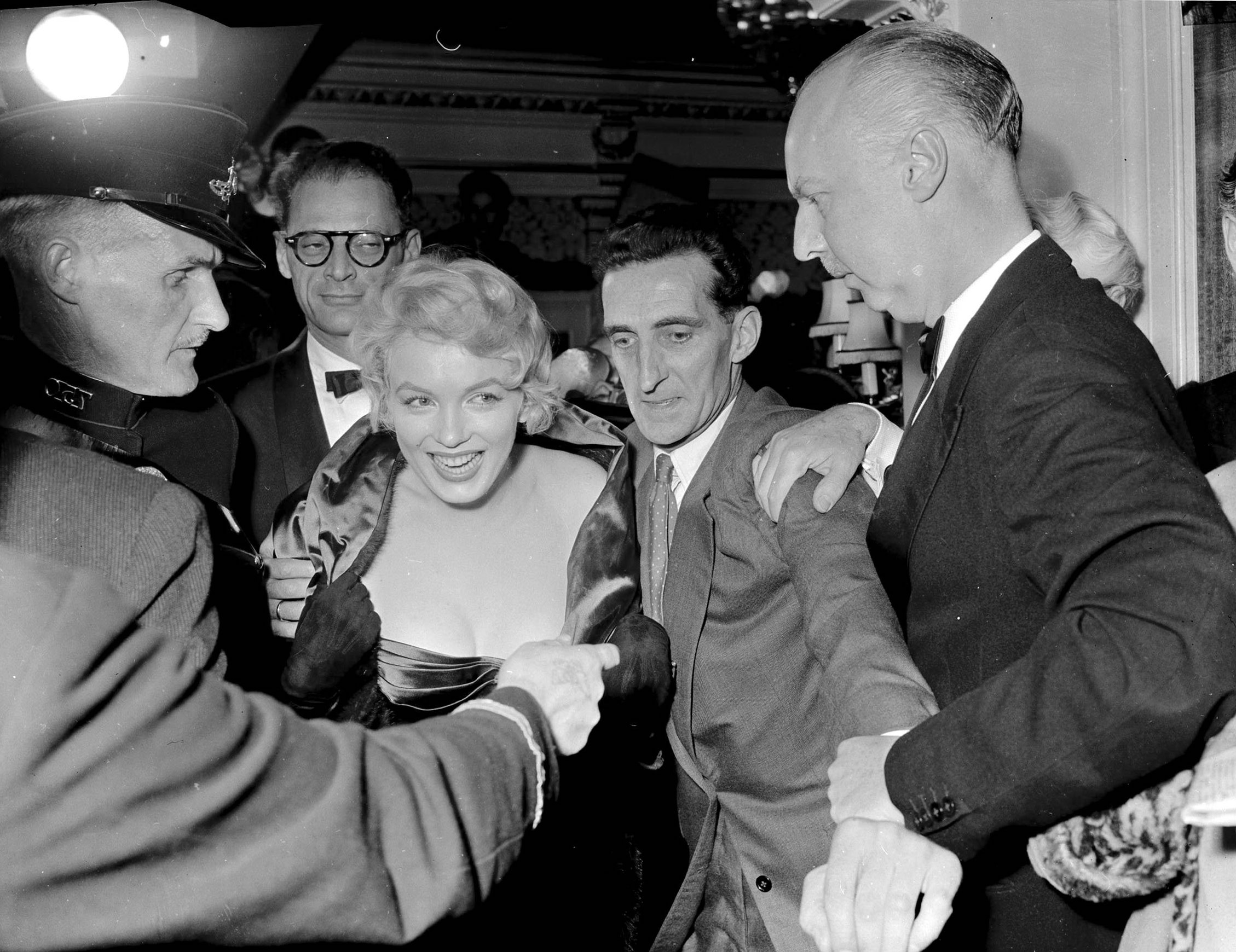
Marilyn Monroe and Arthur Miller in the crush outside the Comedy Theatre for the first night of A View From A Bridge.
Hundreds of people were outside the theatre hoping to get a glance of Marilyn Monroe who was currently in London to appear in the film version of Terrence Rattigan’s play ‘The Sleeping Prince’. It was being directed by and co-starring Lawrence Oliver and eventually would become known as ‘The Prince and the Showgirl’. Marilyn and her husband Arthur Miller had arrived in Britain three months previously in July 1956 after going through a tumultuous few weeks. Not only had they just got married but Miller had recently appeared, three years after his play The Crucible had first been staged, in front of the House Un-American Activities Committee accused of communist sympathies.
Miller had been subpoenaed after applying for a passport to accompany his new wife to London. He had refused, in front of the committee, to inform on his friends and fellow writers, and was cited for contempt of Congress – the trial for which would take place the following year. Monroe, against a lot of advice, had publicly supported Miller through these hearings. There was, however, huge worldwide support for the acclaimed playwright. Wary of hurting American credibility abroad the US State Department ignored the committee’s advice and issued Miller with a passport which enabled him to travel with with his new wife to London.
While Marilyn was filming with Lawrence Oliver at Pinewood, Miller decided to put on a rewritten version of his latest play called View From The Bridge. It was to be directed by Peter Brook and it was the premiere of this play at the Comedy Theatre in Panton Street that had attracted the huge crowd that had made Colin Wilson stop his taxi
The British public were fascinated with Marilyn Monore and Arthur Miller. The Observer, in a piece about the couple wrote: “English faces fell at the match. Intellectual weds glamour puss they smirked: how transient, how bizarre! People in New York who are acquainted with both partners unite in acclaiming Miller’s physical attractiveness and his wife’s instinctive intelligence. “How wonderful it would be,” cried one of their friends (reversing Shaw’s famous reply to Isadora Duncan’s proposal) “if their first child had his looks, and her brains!”
Arthur Miller was no fan of the ‘trivial, voguish theatre’ of the West End, considering it, not entirely unfairly, as ‘slanted to please the upper middle class’. When the auditions started for View From A Bridge in London he asked the director Peter Brook why all the actors had such cut-glass accents. ‘Doesn’t a grocer’s son ever want to become an actor?’ he asked. Brook replied, ‘These ARE all grocer’s sons.’ Ironically at the end of the auditions a Rugby-educated lawyer’s son called Anthony Quayle came closest to portraying a working-class American accent and he was chosen to play the main part of Eddie the New York docker. At the opening night Quayle in Peter Brook’s ‘brilliantly effective production’ was given a standing ovation. Robert Tee in the Daily Express wrote: “I saw Arthur Miller’s wife and his play at the Comedy Theatre last night… and his “A View from the Bridge” was every bit as good as my view of Marilyn Monroe from the stalls.”

Programme for A View From A Bridge at the Comedy Theatre. The New Watergate Theatre Club was a ruse to get past the censors who had banned the play in the UK.
Colin Wilson had recently become a slight acquaintance of Anthony Quayle, after meeting him at one of his numerous parties, and after pushing through the crowds, and two lines of policemen, he got to the stage-door and confidently said: “Mr Quayle’s dressing room?”’ Down the corridor and on the left” said the doorman. Wilson saw Marilyn standing alone in front of a mirror where she was trying to pull up, what the Daily Mirror described the next day, “a shimmering gown of red satin”. Wilson noted that, despite her best efforts, the dress ‘was slipping down towards her nipples’ and not wasting the chance of a lifetime, he went to introduce himself – ‘I had been told she was bookish’, he remembered . According to Wilson there was a definite ‘connection’ with Marilyn and she actually grasped his hand as they made their way through the waiting throng to the cars outside.
A gossip columnist buttonholed Wilson before he left the theatre and asked what he was doing there. Wilson said that he had spent the evening hoping to talk to TS Eliot and ended up meeting Marilyn Monroe. The next morning the columnist duly wrote about the young author meeting Marilyn at the premiere but added that Wilson, while there, had been asked to write a play for Olivier. It was publicity like this that made his supporters question whether he really was a serious writer. The New York Times had written about his almost over-night ascendancy – “he walked into literature like a man walks into his own house”. It is, of course, just as easy to walk out of your own house, and Wilson’s fall from grace was almost as quick as his initial success. The tabloid backlash began in December 1956 when a story in the Sunday Pictorial informed the public that Wilson had a wife and a five year old son but was living with ‘a mistress’ – his girlfriend Joy – in Notting Hill. Around this time Joy’s father came across Wilson’s journals and was shocked to read what he took to be horrific pornographic fantasies about his daughter (in reality, according to Wilson, they were notes for his novel he was currently writing). Joy’s father, along with her mother, sister and brother, arrived at the front door of the flat that she and Wilson shared, intent on rescuing her.
Incredibly the story became front page news for days, even Time magazine in America wrote about the incident involving their favourite ‘English Egghead’: “Without warning, the door of the book-glutted flat was suddenly flung open and in burst Joy’s enraged father. “Aha, Wilson! The game is up!” roared accountant John Stewart, 58, brandishing a horsewhip. Beside Father Stewart stood his wife, bearing a sturdy umbrella…with no further pleasantries, Mrs. Stewart fell to pummelling Philosophy Collector Wilson with her weapon, while the others tried to drag Joy from the villain’s premises. They screamed at Joy: “You will go to hell!” Their efforts were futile. Wilson was unbruised, Joy unbound, when bobbies swooped down on the domestic scene. Crimson with anger, John Stewart offered Wilson’s diary as proof that the rapscallion was “not a genius” but just plain “mad.” Rasped Stewart: “He thinks he’s God!”
The members of the British literary establishment looked down at the young working-class author, they originally feted, utterly aghast. Philip Toynbee, in his books of the year article in the Observer got the backlash rolling, writing, “I doubt whether this interesting and extremely promising book quite deserved the furore which it seems to have caused”. By now The Outsider had earned around £20,000 (approximately £430,000 in 2015) for Wilson, and the critical reappraisal by many of his former supporters may well have been driven, not a little, by a touch of envy. There can’t be many second books that have been set up so beautifully for an author’s reputation to be critically destroyed. Sure enough Wilson’s next book ‘Religion and the Rebel’ published in September 1957 was witheringly and disparagingly panned – “half-baked Nietzsche” wrote the Sunday Times, a “vulgarising rubbish bin” wrote Philip Toynbee who was now remembering The Outsider as “clumsily written and still more clumsily composed”.
Wilson and his girlfriend Joy fled to Cornwall to avoid the still-frenzied press. At one point his journals, which he had been writing since the age of sixteen, were stolen and given to the Daily Mail who gleefully printed excerpts including “The day must come when I am hailed as a major prophet,” and “I must live on, longer than anyone else has ever lived…to be eventually Plato’s ideal sage and king…” Not to be outdone, The Daily Express had Wilson musing that death could be avoided by those with a sufficient intellect: “Where there is a grim tremendous urge to live, death becomes almost impossible. Where there is a great battle to be fought, people do not die. Neither do civilisations. People die because they want to. There are exceptions but on the whole the rule is good. And why do people die? Out of laziness, lack of purpose or direction.
Colin Wilson died in December 2013 caused by the aftermaths of a stroke. It certainly wasn’t laziness or lack of purpose that had anything to do with it – Wilson wrote everyday and had 140 books published in his lifetime. It is his first – The Outsider – for which he will always be remembered. Within weeks of its initial publication it went into a second, third and fourth printing. It was then published in America and became a best-seller there and subsequently translated into a dozen languages. Sixty years after sleeping rough on Hampstead Heath and cycling to the British Museum to write it, the Outsider is still in print.
This is an excerpt from the book Beautiful Idiots and Brilliant Lunatics – A Sideways Look at 20th Century London written by Rob Baker – signed copies obtainable here.
Would you like to support Flashbak?
Please consider making a donation to our site. We don't want to rely on ads to bring you the best of visual culture. You can also support us by signing up to our Mailing List. And you can also follow us on Facebook, Instagram and Twitter. For great art and culture delivered to your door, visit our shop.
